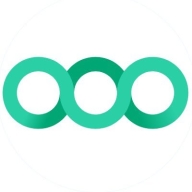

SonarQube Server and Semgrep are leading code analysis tools competing in enhancing software quality. SonarQube offers a wider range of features and strong support, while Semgrep is noted for its flexible and easy integration.
Features: SonarQube Server is known for its comprehensive plugin ecosystem, capability for historical analysis, and extensive dashboards to manage technical debt. Semgrep offers easy setup, the ability to create custom rules tailored to specific needs, and operation without extensive configuration. SonarQube provides deep analytical insights, whereas Semgrep focuses on flexibility and simplicity.
Ease of Deployment and Customer Service: SonarQube Server requires a traditional deployment model with dedicated infrastructure, supported by robust customer service. Semgrep utilizes a cloud-native approach, allowing for quick deployment within CI/CD pipelines, offering a streamlined integration process.
Pricing and ROI: SonarQube Server involves higher setup costs due to infrastructure and licensing but offers substantial ROI through in-depth analysis. Semgrep presents an economical entry point with a flexible pricing model, emphasizing immediate value with minimal costs. The ROI underscores SonarQube's investment return via data insights, while Semgrep appeals to budget-conscious users seeking quick returns.
| Product | Market Share (%) |
|---|---|
| SonarQube Server (formerly SonarQube) | 19.7% |
| Semgrep | 3.0% |
| Other | 77.3% |


| Company Size | Count |
|---|---|
| Small Business | 32 |
| Midsize Enterprise | 21 |
| Large Enterprise | 75 |
Semgrep is an advanced static analysis tool designed to identify vulnerabilities and enforce coding standards, catering primarily to professionals with a focus on enhancing code security and quality.
Engineered for software development environments, Semgrep delivers efficient security feedback with minimal setup. By offering a rich collection of rule sets, it allows customization and integration into CI/CD pipelines, supporting continuous code examination. Semgrep not only uncovers hidden flaws but also enforces best practices, making it a valuable asset for development teams seeking to build secure and reliable software.
What are the most important features of Semgrep?In industry applications, Semgrep is a popular choice for sectors such as finance and healthcare, where code integrity and security are paramount. Its integration capabilities allow for effective oversight of compliance and secure coding standards without disrupting existing workflows. This adaptability ensures it meets sector-specific requirements, making it a trusted tool in fields where data privacy and protection are critical.
SonarQube Server enhances code quality and security via static code analysis. It detects vulnerabilities, improves standards, and reduces technical debt, integrating into CI/CD pipelines.
SonarQube Server is a comprehensive tool for enhancing code quality and security. It offers static code analysis to identify vulnerabilities, improve coding standards, and reduce technical debt. By integrating into CI/CD pipelines, it provides automated checks for adherence to best practices. Organizations use it for code inspection, security testing, and compliance, ensuring development environments with better maintainability and fewer issues.
What are the key features of SonarQube Server?Many industries implement SonarQube Server to uphold coding standards, maintain security protocols, and streamline their software development lifecycle. In sectors like finance and healthcare, adhering to regulations and ensuring reliable software is critical, making SonarQube Server invaluable. It is often integrated into CI/CD pipelines, ensuring that code changes meet set standards before deployment. This approach enhances productivity and maintains compliance with industry-specific requirements.
We monitor all Static Application Security Testing (SAST) reviews to prevent fraudulent reviews and keep review quality high. We do not post reviews by company employees or direct competitors. We validate each review for authenticity via cross-reference with LinkedIn, and personal follow-up with the reviewer when necessary.